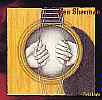Yes, you have to learn to read rhythm!
You need to learn how to read at least the rhythm aspect of standard music notation. Yes you do. I hope this lesson will convince you.
Let's say you open a guitar magazine to learn some licks you saw in a blues lesson- but you only know how to read tab, you don't know any of that counting stuff. So how do you get the lick to sound right? Tab only gives you the notes, it doesn't tell you what the beat of those notes are, the rhythmic phrasing, which is half of what makes music more than just a noisy string of notes. What to do?
Of course, there's an audio version! Call the 900 number, or put on the CD, or go to the website and listen to the clip, then you can learn the phrasing by imitation. That's fine, to a point. But, what if it's a very difficult lick? What if you can't access the audio? Hmm...
There's only one thing to do- SKIP IT! Just kidding. You've got to try to interpret the written example, hence you've got to start learning how to read it. Start working on reading rhythm notation right now, if only for the sake of broadening your horizons, but also for some other good reasons:
Expand your options of things you can learn from- There is a ton of music and instructional material that is only available in music notation, or with no audio version available- a lifetime of learning is out there waiting for you. Why be limited?
Be more independent, self-sufficient - Don't be stuck relying on being shown everything, or only being able to learn by imitation.
Challenging stuff takes slow practice - It's important to practice a difficult part at a slow tempo, but with the correct counting. If you try to learn something challenging only by imitating what you hear, you are going to be in for a struggle. You will want to try to play everything at performance tempo right away, because that's the way you heard it, but sometimes that's just not realistic. Reading the written rhythm allows you to set your own tempo, gradually increasing it as you learn the music better.
Communicate better with other musicians- it's important to be able to speak the language of music, and that includes the vocabulary of rhythm. In that way you can understand very specifically if someone is trying to explain a musical idea to you, and you in turn can be clear about what you are trying to do.
Turn average ability into excellent performance- As a teacher I have seen time and again how a bit of effort applied to learning rhythm can speed up the process of learning songs, and take an average player to a more professional, in-the-pocket level of performance.
Get into the groove- I consider it a blessing that the guitar is a very physical instrument, and it feels good to be able to move your body to the beat, have your arms flying around, and be able to generally carry on crazy. The best, most fun stuff happens when your sense of the beat become second nature, and you can play any sort of rhythmic phrase while never losing the groove.
Okay, you've sat through the lecture. As a reward, here's a cool lick that has a funny count, but can be learned without counting, because it's just a steady stream of notes. It's another lick from "You Ain't Right," off my CD, "First Light". It's adapted from the bass and guitar unison riff that comes after the solo bit I did last time.
Numbers above the tab are fingerings. Connect all four lines into one continuous run. Have a ball, see you next time!




Repeat ad infinitum, or ad nauseum, whichever you prefer.
Ben Sherman is a guitarist from Maryland who has over 27 years playing experience. He has also been giving private lessons for many years, helping guitarists of all levels discover the joy of music-making.
His debut CD is entitled "First Light", which features eight electric rock/fusion numbers and two acoustic pieces.
